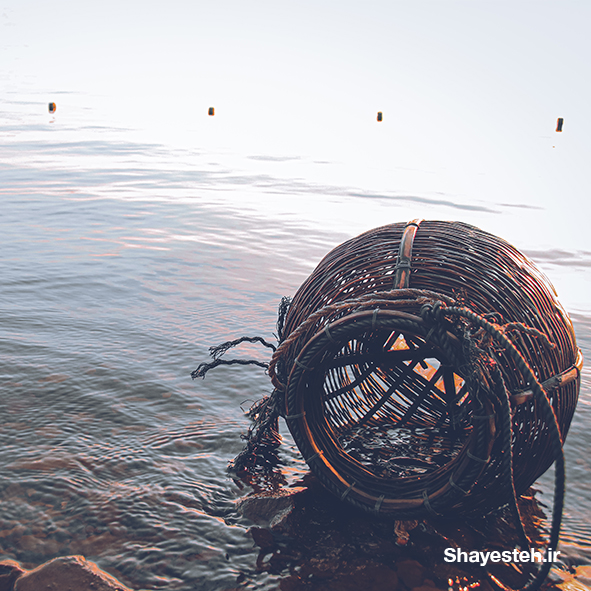در صورتی که اشکالی در ترجمه می بینید می توانید از طریق شماره زیر در واتساپ نظرات خود را برای ما بفرستید
09331464034
Topic:
Woven baskets characterized by a particular distinctive pattern have previously been found only in the immediate vicinity of the prehistoric village of Palea and therefore were believed to have been made only by the Palean people. Recently, however, archaeologists discovered such a "Palean" basket in Lithos, an ancient village across the Brim River from Palea. The Brim River is very deep and broad, and so the ancient Paleans could have crossed it only by boat, and no Palean boats have been found. Thus it follows that the so-called Palean baskets were not uniquely Palean.
Write a response in which you discuss what specific evidence is needed to evaluate the argument and explain how the evidence would weaken or strengthen the argument.
سبدهای بافته شده ای که با الگوی متمایز خاصی مشخص شده اند، قبلاً فقط در مجاورت دهکده ماقبل تاریخ Palea یافت شده اند و بنابراین اعتقاد بر این است که تنها توسط مردم Palean ساخته شده است. با این حال، اخیراً، باستان شناسان این سبدهای "Palean" را در Lithos که دهکده ای باستانی در آن سوی رودخانه Brim که همجوار دهکده Palea می باشد، کشف کردند. رودخانه Brim بسیار عمیق و پهناور است و بنابراین مردم اهل پالین باستان فقط با قایق می توانستند از آن عبور کنند درصورتیکه هیچ قایق پالینی یافت نشده است. بنابراین نتیجه می گیریم که سبدهای به اصطلاح بافته شده پالین ها منحصرا پالینی نبودند.
پاسخی بنویسید و در آن توضیح دهید که چه مستندات خاصی برای ارزیابی بحث لازم است و شرح دهید که چگونه این مستندات می تواند بحث را تضعیف یا تقویت کند.
• ممکن است سبد ها بین ۲ روستا داد و ستد شده باشند یا به یکدیگر هدیه داده باشند.
• ممکن است برای عبور از رودخانه از پل یا از وسیله های دیگر مانند طناب بالای رودخونه، استفاده کرده باشند.
• ممکن است در گذشته رودخانه، بستر دیگری داشته و شرایط آب و هوایی، مسیر و عمق فعلی رو بوجود آورده باشد.
• ممکن است در آن زمان عمق رودخانه اینقدر عمیق نبوده و میشد از آن عبور کرد.
• نیاز به شواهدی (نه فقط یک مورد بلکه چندین مورد) می باشد که نشان دهد همزمان با دوره پالین ها، این سبد ها در لیتوس هم بافته می شده است.
• نیافتن بقایای قایق نشان از وجود نداشتن قایق نیست. نیاز به شواهدی است که نشان دهد اگر قایقی در آن زمان وجود داشت، بقایای آن کشف می شد. مثلا شاید قایق ها هنوز در جایی دفن شده باشند و هنوز پیدا نشده باشند و یا حتی در گذشته همان قایق ها به روستاهای اطراف فروخته شده باشند.
• نیاز به شواهدی که نشان دهد روستاییان لیتوس هم قایق نداشته اند، چون در متن فقط اشاره شده که در روستای پالین هیچ مدرکی دال بر وجود قایق نیست.
Strategies
The first step in performing your analysis consists of identifying the texts’ key point, recommendation, prediction or hypothesis. All the other arguments and assumptions are designed to support this central claim. In this case, the author attempts to demonstrate that “Palean baskets were not uniquely Palean”.
The next step would involve creating a statement that summarizes the text by including the central claim and its supporting arguments.
The author theorizes that the Palean baskets are no longer considered to be unique since a similar basket has been discovered in a different settlement that could only be reached by boat and the Paleans did not possess navigational means.
When considering the evidence that is necessary to support the arguments outlined in the text, it is important to keep in mind that arguments are based on assumptions – points that are taken to be true, without need for proof. This is what you need to look for – explicit and implicit assumptions, since they require evidence that is not already listed in the text. Explicit assumptions can be broken down into or supported by implicit assumptions.
Assumptions:
i) Explicit Assumption: The basket found in Lithos was crafted there
Implicit Assumptions:
a) Lithos or the surrounding area has the raw materials necessary to make baskets
b) Lithos people have the woodworking skills required to make the baskets
c) The basket that was found in Lithos is made from raw materials that can be found in the area
ii) Explicit Assumption: The Brim River was broad and deep in the prehistoric period
Implicit Assumptions:
a) The prehistoric water levels of the Brim River were high
b) The prehistoric water levels of the Brim River were consistently high
iii) Explicit Assumption: Prehistoric deep river crossing could only be done by boat
Implicit Assumptions:
a) There were no other viable river crossing methods available at that time
b) From a geographical standpoint, Lithos could only be reached by crossing the river
iv) Explicit Assumption: Only Paleans could have transported the basket across the river
Implicit Assumptions:
a) Lithos is not a maritime community
b) Paleans did not trade with Lithos or any maritime communities
c) There are no other maritime communities in the area
v) Explicit Assumption: Boat findings are a sufficient indicator of the presence or absence of a maritime culture
Implicit Assumptions:
a) The area’s climate and geological history can preserve boat remains
b) There are no other sources that can indicate the existence of a maritime culture
After having established your assumptions, you can find the evidence that is needed to evaluate the argument by considering what proof is necessary to validate each implicit assumption.
Evidence:
a) Historical or geological records indicating the presence of pliable or fibrous material in Lithos
b) Weaving tool findings in Lithos
c) The presence of artifacts crafted using similar woodworking techniques in Lithos
d) Comparison of the Lithos basket materials with the raw materials available at the time in the area
e) Geographical records of the prehistoric water levels of the Brim River (sedimentation, digital elevation etc.)
f) Prehistoric rainfall records in the area
g) River crossing methods available in the time period and area
h) Geological map of the area in prehistoric times (cave systems, the river’s paleo-shorelines)
i) Boat findings in Lithos
j) Historical records of the navigational means available in Lithos (written or oral history, carvings, cave paintings etc.)
k) The presence of distinctively foreign artifacts in Palea belonging to settlements from across the river
l) The number of Palean artifacts found in settlements from across the river
m) Boat findings in the area
n) Historical records of the navigational means available in the settlements in the area (written or oral history, carvings, cave paintings etc.)
o) Comparison of the area’s climate and geographical history with the conditions necessary for boat preservation
p) Alternative historical sources related to the navigational means available in Palea
Sample 1:
The author theorizes that the Palean baskets are no longer considered to be unique since a similar basket has been discovered in a different settlement that could only be reached by boat and the Paleans did not possess navigational means. More detailed information is necessary in order to be able to evaluate the truth of this claim.
The most compelling bit of evidence that is missing from the author’s argument is related to the historical water levels of the Brim River. The writer assumes that since the Brim River is currently broad and deep the conditions must have been similar in the past. However, river levels fluctuate widely, and periods of drought can severely affect the breadth and depth of a river. In order to support his claim, the author should consider the geographical records of the prehistoric water levels of the Brim River and the prehistoric rainfall records in the area. Based on this data, should the Brim River prove to have been consistently high in the time period when the Palea village existed, then it becomes less likely that the Palean style basket found in Lithos could have been carried across the river without the aid of boat. Conversely, should the evidence show that the Brim River had low water levels in the prehistoric period, or the Palea region experienced periods of severe drought, then it becomes more likely that the Brim River could be crossed without a boat. In this case, the presence of a Palean basket in Lithos could be seen as evidence of trade rather than of Lithos developing a similar weaving style.
When making his case that the Palean basket was never transported across the river, the author assumes that deep river crossing is only possible with the aid of a boat. In order to be able to prove this claim, the author needs to look into what river crossing methods were available at the time and if there were any other geological possibilities of reaching Lithos, such as cave systems connecting the two banks of the river.
The next step in the author’s argument relies on the assumption that only Paleans could have transported the basket across the river. In order to support this claim, the writer would need to show that neither Lithos nor any of the surrounding communities would have possessed the means of transporting the basket across the river. The most direct way to investigate this would involve looking at records of boat findings in Lithos or the surrounding area. Additional sources such as cave paintings, carvings or historical records depicting boats can also be used to determine whether the settlements in the area possessed a maritime culture. For instance, ancient Egypt, a civilization built on river trading, has many visual representations of boats and a history of nautical trading depicted in hieroglyphs. In the absence of boat findings or cultural evidence, trading records can also be used to demonstrate whether or not Palea had any contact with settlements from across the Brim River. Such trading evidence can come in the form of distinctively foreign artifacts in Palea belonging to settlements from across the river, or the other way around, Palean artifacts found in settlements from across the river. Should this evidence prove that it is possible that the basket found in Lithos is a result of trading, the main claim that the Palean baskets are not uniquely Palean would be severely weakened.
When arguing that the absence of boat findings in Palea shows that Paleans could not have transported the basket across the river, the author assumes that boat findings are a sufficient indicator of the presence or absence of a maritime culture. A comparison of the area’s climate and geographical history with the conditions that are necessary for boat preservation would make it easier to state with a certainty whether or not Paleans could cross the river.
Another assumption made by the author of the text is that the basket found in Lithos was crafted there. In order to assess the validity of this statement, the author should analyze whether or not the people of Lithos had the ability to produce the basket that was found there. He would first need to establish if the Lithos people had the necessary raw materials to produce the baskets. This can be accomplished by looking at historical or geological records indicating the presence of pliable or fibrous material in Lithos. This evidence would not be sufficient to either prove or disprove the claim. The author would further have to demonstrate that not just general weaving materials, but also the specific materials required for the basket can be found in the area. However, the argument would still be incomplete without the data that demonstrates that the people of Lithos had the necessary skills to make the basket. Such evidence could be gained by examining records detailing the presence of weaving tools in Lithos, or the presence of artifacts crafted using woodworking techniques similar to those required to make the basket.
All in all, additional evidence should make the author’s claims harder to refute and help prevent him from drawing faulty conclusions based on inaccurate or incomplete data.
نظرات کاربران
هنوز نظری درج نشده است!


